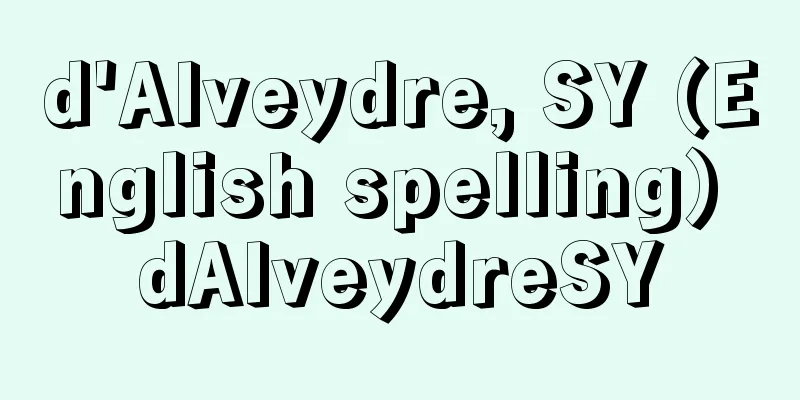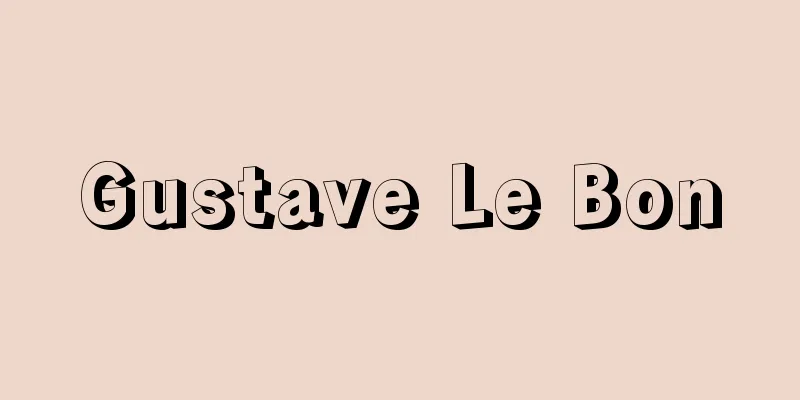Defense mechanism

|
One of the central concepts in psychoanalysis. When faced with a situation that makes it difficult to maintain the integrity of the personality due to anxiety, the ego unconsciously makes various efforts to prevent the collapse, and this function of the ego is called a defense mechanism. Threats to the ego include the harsh real world surrounding the individual on the one hand, and the internal es (also called the id) and superego on the other. In other words, the ego is also threatened by the id, which tries to unilaterally satisfy impulses according to the pleasure principle, and the superego, which commands moral prohibitions. The ego tries to protect itself from anxiety, pain, and guilt caused by the conflict between the external reality, the internal id, and the superego, and to maintain the integrity of the personality. Below, we will look at the main defense mechanisms of the ego. (1) Repression This is the function of the ego to exclude unacceptable thoughts, ideas, emotions, impulses, memories, etc. from consciousness and relegate them to the unconscious. For example, situations such as "I can't remember" or "I don't understand" are due to this mechanism. This "repression" is the basis of defense mechanisms. (2) Reaction formation: Taking on attitudes and behaviors that are the exact opposite of the repressed desires and impulses. For example, strong sexual interest may manifest as extreme sexual contempt or indifference. (3) Projection: Transferring unacceptable thoughts and feelings that you have about others onto others (blaming them), and assuming that the other person has the same thoughts and feelings. For example, the hatred you have toward others may be unconsciously transferred onto the other person, making you think that he hates you. (4) Identification: This can be when you consider an external object (other person) to be the same as yourself, or when you adopt the qualities and attitudes of the object and identify with it. For example, children resemble their parents because they adopt their parents' characteristics into themselves. (5) Rationalization: Unconsciously concealing the true motives of one's actions and coming to terms with them with other plausible explanations. For example, the fox in Aesop's Fables believes that the grapes he cannot pick are sour. (6) Sublimation: Replacing repressed impulses with socially or culturally valuable activities. For example, nude statues and paintings of women are considered to be the sublimation of the artist's sexual impulses. This is not only a defense mechanism against inner impulses, but also a psychological mechanism that underpins creative activities such as academia, art, culture, and religion. (7) Displacement: A mechanism to relieve anxiety by redirecting impulses or attitudes that are unacceptable in a given situation onto another object. For example, directing hatred toward one's father toward one's boss at work. Other defense mechanisms that have been pointed out include regression, negation (restoration), diversion, isolation, intake, intellectualization, escape, compensation, substitution, attack, and fixation. As the name suggests, defense mechanisms are passive psychological mechanisms of "defense," and do not actively seek to solve problems in a rational way. They are therefore a kind of self-deceptive way of dealing with problems. However, since it is impossible for humans to solve all problems rationally, humans have no choice but to use defense mechanisms. In this respect, defense mechanisms are essential for humans, but they should only be used within appropriate limits, and frequent use of them can result in neurotic symptoms. [Keigo Kubota] "Introduction to Freudian Psychoanalysis" edited by Keigo Okogi and Kenichi Baba (1977, Yuhikaku Shinsho)" ▽ "Ego and Defense Mechanisms" by A. Freud, translated by Shoshiro Kuromaru and Ryohei Nakano (1982, Iwasaki Academic Press)" ▽ "Introduction to Psychoanalysis I" by S. Freud, translated by Katsumune Kakeda (2001, Chuokoron-Shinsha)" [References] | |Source: Shogakukan Encyclopedia Nipponica About Encyclopedia Nipponica Information | Legend |
|
精神分析の中心概念の一つ。不安によって人格の統合性を維持することが困難な事態に直面したとき、自我egoはその崩壊を防ぐためにさまざまな努力を無意識のうちに行うが、このような自我の働きを防衛機制という。自我を脅かすものとしては、一方にはその個人を取り巻く外界の厳しい現実社会があり、他方には自分の内部のエスes(イドidともいう)や超自我super-egoがある。すなわち自我は、快感原則に従って衝動を一方的に満足させようとするエスや、道徳的な禁止を命ずる超自我などによっても脅かされる。自我は、こうした外的現実や内界のエスならびに超自我の三者間の葛藤(かっとう)による不安や苦痛や罪悪感などから自身を守り、人格の統一性を保持しようとするのである。以下、自我による防衛機制の主要なものを取り上げる。(1)抑圧repression 容認しがたい思考、観念、感情、衝動、記憶などを意識から排除し、無意識へ追いやる自我の働きをいう。たとえば「思い出せない」「わからない」という事態はこの機制による。防衛機制の基盤をなしているのが、この「抑圧」である。(2)反動形成reaction formation 抑圧している欲望や衝動と正反対の態度や行動をとること。たとえば、強い性的関心が極度の性的蔑視(べっし)や無関心の態度として現れている場合である。(3)投影(投射)projection 自分が他人に対してもっている認めがたい考えや感情を他人に移して(人のせいにして)、他人がそのような考えや感情をもっているとみなすこと。たとえば、自分のなかにある他者に対する憎悪感が、無意識のうちに他者に移され、彼が自分を憎んでいると思うことなど。(4)同一化・同一視identification これは、外界の対象(他者)と自己とを同一とみなす場合と、対象に属する諸性質や態度を自分のうちに取り入れて同一化する場合とがある。たとえば、子供が親に似てくるのは、親の特徴を自分のうちに取り入れるからである。(5)合理化rationalization 自分の行動の本当の動機を無意識のうちに隠し、ほかのもっともらしい理屈をつけて納得すること。たとえば、『イソップ物語』に登場するキツネがとろうとしてもどうしてもとれないブドウに対して、あれは酸っぱいブドウなのだと思い込むこと。(6)昇華sublimation 抑圧された衝動が社会的、文化的に価値ある活動に置き換えられること。たとえば、裸婦像や裸婦画はその芸術家の性衝動の昇華とみなされる。これは内的衝動に対する防衛機制であるばかりでなく、学問、芸術、文化、宗教などの創造的活動の基礎をなす心理機制でもある。(7)置換えdisplacement ある状況下で容認されがたい衝動や態度を、別の対象に向け換えて不安を解消しようとする機制。たとえば、父親に対する憎しみを職場の上司に向ける場合など。 防衛機制にはこのほか退行、打ち消し(復元)、転換、隔離、摂取(取り入れ)、知性化、逃避、補償、代償、攻撃、固着などが指摘されている。防衛機制はその名称が示すように「防衛」という消極的な心理機制であって、積極的に合理的な方法で問題解決を図るものではない。それゆえに一種の自己欺瞞(ぎまん)的な問題処理の仕方である。しかし、人間はすべての問題を合理的に解決することは不可能なので、防衛機制を用いざるをえない。この点で防衛機制は人間にとって不可欠なものであるが、あくまで適切な範囲内で用いられるべきものであり、頻繁にこれが用いられると神経症的な症状を形成することになる。 [久保田圭伍] 『小此木啓吾・馬場謙一編『フロイト精神分析入門』(1977・有斐閣新書)』▽『A・フロイト著、黒丸正四郎・中野良平訳『自我と防衛機制』(1982・岩崎学術出版社)』▽『S・フロイト著、懸田克躬訳『精神分析学入門Ⅰ』(2001・中央公論新社)』 [参照項目] | |出典 小学館 日本大百科全書(ニッポニカ)日本大百科全書(ニッポニカ)について 情報 | 凡例 |
>>: Defense-related expenditures
Recommend
Noctilucent clouds
A cloud that is rarely seen in the sky at high la...
rigid frame
…In English, it is called a rigid frame. It is a ...
Verification - Augenscheinbeweis
Evidence examination is when a judge obtains evide...
Body Donation
A corpse is a donation of a person's body to ...
Yellow rice - Ohan
This dish is found in the Usuki region of Oita Pr...
Oil Well Cement
...Because it has a faster setting and hardening ...
Exobasidium vexans (English spelling)
…[Tsubaki Keisuke]. . . *Some of the terminology ...
Shusaku Endo
Novelist. Born on March 27, 1923 in Sugamo, Tokyo...
Topelius - Sakari Topelius
Finnish author and historian. Born in the remote ...
Fire Rocket
〘Noun〙 ("Yan" means arrow) Arrows that a...
Aggregation - Aggregation
...In the past, such individual health checkups w...
Face
...In any case, the characters mochi (rice cake) ...
Goette's larva
… They are hermaphrodites, with both male and fem...
Montevideo (English spelling)
The capital of Uruguay. It is the capital of Monte...
Industrial unified struggle
A term used mainly for Japanese labor union moveme...









